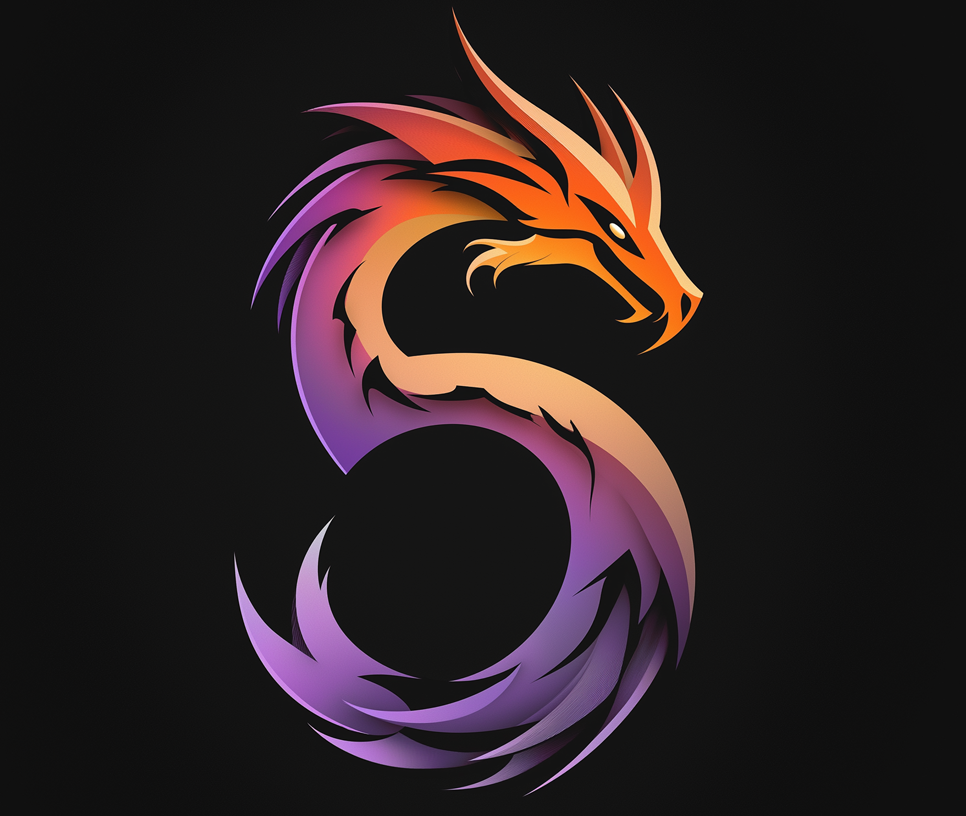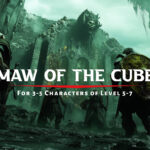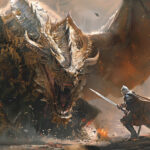What is Dark Mages
In 2015, my friend Rick and I created a card game based on the now out-of-print SRD 5.1 document from WoTC. Dark Mages is a 120 card game that can be played by 2 to 8 players. It is a game of luck and strategy that takes anywhere from 20 to 60 minutes to play.
This game includes 8 character cards, 112 playing cards, rules and instructions, 7 polyhedron dice (d4, d6, d8, d10, d12, d20 and d00), and a velvet pouch.
First Kickstarter Campaign: https://www.kickstarter.com/projects/ericbleney/dark-mages
BoardGameGeek: https://boardgamegeek.com/boardgame/187488/dark-mages
Introduction
In Dark Mages, you play one of 8 powerful magicians who compete in a merciless battle on the plains of Thärin. You must defeat your enemies on the battlefield using your power and Magic Item, Hex, Scroll, or Spell cards. Alone or in teams, the goal is to defeat all opponents to become the legendary magician of the continent of Northland.
Dark Mages is a card game mixing role-playing, luck, and strategy turn-based aspects. The game includes 7 polyhedral dice1 and 120 cards, including 8 Character cards with unique attributes and 112 playing cards.
One after the other, clockwise, each player performs the phases of their turn.
The goal is to defeat all your opponents by reducing their number of hit points to 0.
Preparation of a Game
- To begin, each player draws a random character card and places it on the table in front of them. Each magician starts with 60 hit points, an arcane caster level of 1, and an armor class of 10.
- Shuffle the stack deck, and distribute 5 cards per player.
- Each player rolls die with 20 faces, and the one with the highest score will go first.
Turn Structure
Preparation Phase
This phase is designed to prepare you for the battle. You may place on the table or replace Magic Item cards, play a Healing card, and a Potion card. You can also place a Companion by your side or replace the one you already have.
If you replace a Magic Item or Companion card, discard the one you removed in the discard pile.
Attack Phase
Once a turn, you can attack an opponent of your choice using either a Spell, Hex, Scroll card, or your cantrip.
Some cards require that you first make an attack roll using 1d20 to confirm that your attack will hit the target and inflict damages.
If you have a companion in attack mode, it can attack once per turn after you. First make an attack roll to confirm your companion will hit the target and inflict damages.
End Phase
You can discard 1 card from your hand and draw the number of cards you need to have a total of 5 cards in hand.
Defeat an Opponent
A player is considered defeated when their number of hit points is reduced to 0.
That player must discard his hand but leave his character and his equipped magical items on the table.
The player who defeated an opponent can choose a magic item on the fallen character, but the victorious player should immediately equip this item on their character or use it to replace an object they already carry. The item replaced is discarded.
If a companion deals the fatal blow, the victorious player cannot take a magic item.
Designation of the Winner
The winner is the player or team that manages to defeat all other players by reducing their number of hit points to 0.
Types of Cards
The basic Dark Mages game includes various kinds of cards.
Characters
The Character cards represent your magician throughout the game. Each corner has a symbol and its color and serves as an attachment point to equip magical items with the same symbol so that your character’s attributes can increase.
They show the magic sphere for which your character receives a bonus. In addition, they indicate what cantrip serves as your basic attack when you don’t have any attack cards.
They also show your character’s attributes, including its number of hit points, armor class, and arcane caster level.
Spell (Attack Phase)
Spell cards allow your magician to attack an opponent. First, you must complete an attack roll to determine if the spell will hit your target. Each spell has a magic sphere with the number 1, 2, or 3. This number represents the minimum arcane caster level required to cast the spell.
Discard the Spell cards after they have been used.
Hex (Attack Phase)
Hex cards allow your magician to curse an opponent. No attack roll is required to play this card, as the opponent is entitled to a saving throw, allowing that player to avoid the curse.
Discard the Hex cards after they have been used.
Scroll (Attack Phase)
Scroll cards allow your magician to throw a spell with no attack roll1 necessary. The opponent is entitled to a saving throw, allowing that player to avoid the spell.
Discard the Scroll cards after they have been used.
Companion (Preparation Phase)
Companions are creatures that accompany your character during battle and can have 2 roles: attacker or defender. During the preparation phase, place your companion face up on the table, indicating its role:
Defender: Place your companion horizontally. It becomes a natural shield for your magician. Whenever your magician is attacked, the companion takes the damage on his behalf and defends him for as long as it has hit points remaining. Once the companion’s number of hit points is reduced to 0, discard the Companion card.
Attacker: Place the companion vertically. Once per turn, after your attack, the companion can attack an opponent of your choice using an attack roll first, but opponents can also attack your companion. Once the companion’s number of hit points is reduced to 0, discard the companion card.
The mode of the companion must be specified when the card is placed on the table and may not be changed. You can have only 1 companion at a time, but you can replace it during your turn by discarding it.
Skill (Preparation or Attack Phase)
Skill cards allow your magician to use a special ability that grants him benefits. You can play only 1 Skill card per turn.
Discard the Skill cards after they have been used.
Defense (Preparation or Attack Phase)
When your magician is attacked, place the Defense card on the table before the opponent’s attack roll.
In some cases, a Defense card can be deflected by another Defense card.
Discard the Defense cards after they have been used.
Magic Item (Preparation Phase)
Magic Item cards can increase the power of your character, either his attack or defense, depending on their effects. Equip your character with a magic item by placing the symbol of the Magic Item card over its corresponding symbol on your Character card. You can place or replace a maximum of 4 Magic Items during your turn but can only attach 1 card per symbol.
Discard the replaced Magic Item cards after they have been used.
Potion (Preparation Phase)
Potion cards represent potions that provide different bonuses. They have various durations and effects, but only 1 Potion card can be used per turn.
Discard the Potion cards after they have been used.
Healing (Preparation Phase)
Healing cards allow the magician to recover the number of hit points indicated on the card. The maximum number of hit points, which is 60, can never be exceeded.
Discard the Healing cards after they have been used.
Artifact (Preparation or Attack Phase)
Artifact cards can be found in various categories and represent legendary relics that give your magician extremely powerful attributes.
Discard the Artifact cards after they have been used (except for the Magic Items).
Enemy (As soon as drawn)
Enemy cards can be drawn throughout the game by any player. They must all be immediately placed on the table as soon as they are drawn. No action may be taken against other players as long as the enemy is on the table.
Encounter: Encounters attack all players once at the same time before leaving. Only a saving throw or Dodge card can counter their attack.
Discard the Encounter cards after the attack of the enemy is over.
Tenacious Enemy: Tenacious enemies have hit points, attack damages, and an armor class indicated on their card. They absolutely must be defeated for the game to resume normally. They start by attacking all the magicians at the same time (only a saving throw or Dodge card can counter their attack) who then unite against the enemy and take their turns. After every magician has their turn, the enemy attacks again, and turns alternate as such until the tenacious enemy is defeated.
Discard Tenacious Enemy cards after the enemy is defeated.
Black Cards
Black cards are very rare and can be found in all categories. Marked with the letters BC (black card), they are added randomly in the game boxes or expansion packs in very limited quantities.
Attributes
Each character has its own attributes, which can be improved in various ways during the game.
Each character starts with 60 hit points. This number decreases or increases throughout the game but can never exceed 60.
The armor class is the resistance of the character, which indicates the number that the opponent must have or exceed to complete a successful attack roll. Each character starts with an armor class of 10, and it may vary during the game.
This symbol represents your magician’s arcane caster level, which starts at 1.
Magic
Magic Spheres
Magic spells are divided into categories called “magic spheres.” Characters can cast magic spells from different spheres, but each of them specializes in 1 sphere that grants them additional bonuses identified in the reference table.
Sphere Bonus
Each character has a sphere bonus. When you play a Spell card that is the same color as your magician’s own magic sphere during the attack phase, you get an additional +1 arcane caster level, and you can add +1 to your attack roll. If an opponent plays a Spell card that is the same color as your magic sphere, your magician’s armor class is increased by 3.
Cantrips
Cantrips are basic magic spells specific to your magician that you can use as an attack if you have no attack cards (Spell, Hex, or Scroll). Cantrips cannot be combined or added to another attack.
Arcane caster level
The arcane caster level of your character determines the power of his attacks. It varies throughout the game based on the arcane bonus associated with your equipped magic items. Initially, your character has an arcane caster level of 1, allowing him to cast all spells having the same number. If he reaches the arcane caster level 2, the magician can cast level 2 spells and so on.
During an attack, the arcane caster level is directly related to the number of dice that you can use to inflict damage. It influences the first digit of the polyhedral dice designations. If your character has an arcane caster level of 1, you can roll “1d6.” If he reaches the arcane caster level 2, you can roll “2d6” and so on.
Glossary
Armor Class
The armor class is the resistance of your character and determines the difficulty the enemies will have to hit your character. It indicates the result that the opponent must roll with the dice to have a chance to inflict damage. The basic armor class for every character is 10, and it can go up or down during the game.
Attack Roll
The attack roll represents the attempt of a magician to hit an opponent during the attack phase. To make an attack roll, roll 1d20 and add your bonus if you have any. If the final result is equal to or greater than the opponent’s armor class, you can proceed and roll the dice as per the attack card and deal the damage indicated.
Critical Hit: If you get 20 making your attack roll, the result is a critical hit. The damage dealt to your opponent is doubled.
Fumble: If you get 1 making your attack roll, the result is an automatic miss, and you will receive the damage of the attack.
Damages
Any successful attack deals damage equal to the number of dice indicated on the card, for example, “1d6.” In addition, bonus damage applies in the form of extra dice equal to your arcane level. For example, if your magician has an arcane caster level of 2, “1d6” becomes “2d6.” The same applies for the following levels.
Discard Pile
The discard pile is where players throw away their cards during the game.
Hit Points
Each player starts with 60 hit points. This number decreases or increases throughout the game but can never exceed 60. The character is considered dead if it is left with no (0) hit points.
Polyhedral Dice
The game uses 7 different polyhedral dice (d4, d6, d8, d10, d12, d20, and d00). The number of faces on the die often determines its name.
In “1d6,” the first digit indicates the required number of die rolls, the letter means “dice,” and the second digit is the type of dice to use. In the case of a “2d10” attack, you must roll the 10-sided die twice and add your results to know the amount of damage points dealt.
To simulate “1d100,” a die with 100 faces (percentile dice), roll the 10-sided die twice. The first result stands for the tens and the second for the units. Two zeros make 100.
Saving Throw
The saving throw allows a magician to avoid some attacks when mentioned in a card description. For a successful saving throw, you have to roll a number lower than your own armor class with a “1d20.”
Stack
The stack is the shuffled, not distributed deck of cards placed face down that players can draw from during the game. Once no more cards are left in the stack, shuffle the discard pile to create a new stack.





